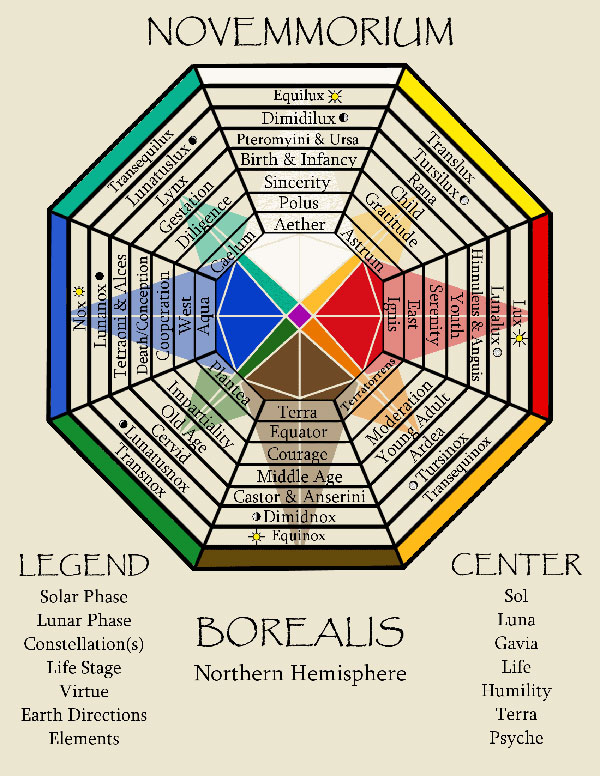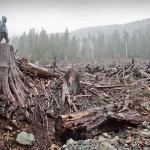*This will end up being a category Tab that replaces ‘Rituals & Ceremonies’ and will be periodically updated*
This is Paths Through The Forests’ go to page for all things we’ve written on Holidays, Rituals and History – organized by time of year it is related to.

Festivities of Natural Annual Events
Rua Lupa shares what the seasons are like around the world for each time of year and what celebrations are happening because of them.
Borealis Equilux (Equal Length of Day & Night Globally)
Borealis Translux (Midway Global Equinox & Solstice)
Borealis Lux (Longest Day & Night of The Year)
Australis Transequilux (Midway Global Solstice & Equinox)
Australis Equilux (Equal Length of Day & Night Globally)
Australis Translux (Midway Global Equinox & Solstice)
Australis Lux (Longest Night & Day of The Year)
Borealis Transequilux (Midway Global Solstice & Equinox)

Articles the Lupas wrote that relate to the seasons:
Equilux / Spring Equinox / Ostara
‘Equilux, Preparing For A New Day: Ethical House Cleaning, Downsizing, Mending & An Offering To The Birds’ – “Rua Lupa gets into the nitty gritty of conscientious house cleaning and downsizing, with added tips on how to repurpose sentimental items, mend clothes with style, and use what comes out of house cleaning as gifts for the birds.”
Translux / Beltane
‘Cultural Quandaries: Spring & Sex’ – “Spring celebrations have a lot of sexual suggestion in them, but is human sexuality relevant to this time of year?”
‘A Message For Earth Day: The Separation Effect’ – “Rua Lupa writes on a way of thought that influenced our past and is crucial in understanding for our future. The Separation Effect.”
Lux / Summer Solstice / Litha / Midsummer
‘Saegoah Celebrations: Lux (Summer Solstice)’ – “A Saegoah’s Way of Celebrating The Longest Day of The Year. Playing with light, movement, colour and celebrating the youth coming into their own.”
‘Solitary Solstice‘ – “Lupa Greenwolf has plans for a very sedate solstice”
Transequinox / Lughnasadh / Lammas
‘A Saegoah Styled Wedding Ceremony – Or Bonding Ceremony’ – “A Saegoah Wedding is called a Bonding Ceremony, and it is typically done between Transequinox & Equinox when the weather is warm, food is plentiful, and if conception occurs the offspring arrives when most life does – in spring. As it is now that time of year, here are a couple of Bonding Ceremonies. One Public, and one Personal.”
Equinox / Autumn Equinox / Mabon
‘DIY Autumn Adventures – Growing A Forest Garden. It can supply food, medicine, and sanity, while protecting against drought & flood’ – “Learn how you can turn a energy and resource guzzling lawn into a food forest oasis! And you can start the process this autumn by working with nature’s natural seeding time. ”
‘DIY Autumn Adventures – Dyeing With Goldenrod’ – Tis the season for dyeing.
Transnox / Samhain
‘Cultural Quandaries: Death’ – “Death is often something dreaded and not talked about. This sort of reaction to a reality we face has caused more grief than warranted for the amazing thing that it is. Here is a way to approach death in a very positive way that makes the transition easier for you, your loved ones and the ecosystem we all rely on.”
‘Viridos – Green Bones’ – “…without death there would be no soil or nutrients in the water, and no soil or aquatic nutrient means no plants, and no plants means nothing for creatures to eat – its the dead that nourish the living.”
‘Love Letters To My Ancestors I’ – “Lupa Greenwolf marks this Samhain season–and an interfaith collaboration–with the first of three love letters to her ancestors, starting with her human ancestors.”
‘Love Letters To My Ancestors II’ – “Lupa Greenwolf addresses her second love letter to her non-human ancestors, those all too often forgotten in human rites”
‘Love Letters To My Ancestors III’ – “Lupa Greenwolf addresses her third and final Samhain love letter to those she will be an ancestor to someday, voicing both regret and hope for the future she will leave for others.”
Nox / Winter Solstice / Yule / Midwinter
‘The Real Reason For The Season’ – “Each year I encounter something that most Pagans know, but the general public is oddly oblivious to. People who casually complain about the dark and don’t know about the shortest day of the year, or even when it is. I know this because that is when I mention that soon enough the days will be getting longer they blankly stare at me and say, “Really? When?” It becomes very hard not to do a face palm each time I encounter this, and its frequent. So I feel compelled to talk about the Real reason for the season.”
‘Celebrating Nox – The Longest Night – The Year’s Midnight. What You Can Do At Home’
‘How You Can Have A Nox Festival – A Festival for The Longest Night’
‘Saegoah Celebrations: Nox (Winter Solstice)’ – “One Saegoah’s way of celebrating the longest night of the year”
‘When, In The New Year, Antlers Drop’ – “As the New Year arrives, Lupa Greenwolf describes how an antler is like a bad habit–and what we can learn from deer and elk”
‘Cultural Quandaries: Earth’s Civil Calendar. How did we end up with the calendar we have anyway?’ – With one of the biggest civil holidays and new year occurring at this time, here is why and how they came to be.
Saegoah Pursuits: Creative and Eco-Friendly Gift Wrapping – “As this is the time of year when we reach the climax of seasonal gift wrapping, I have decided to share some of my creative eco-friendly wrapping techniques – and there are really two primary methods to it. 1) Cloth Bag Wrapping, and 2) Paper & Paint Wrapping”
Transequilux / Imbolc
‘Transequilux Keeps Me Occupied’ – Transequilux can be a busy time of year, when for most people it is the slowest.
Miscellaneous Rituals & History Articles

Rituals
‘Worldview Connections: A Meditation On Our Worldviews & Their Impacts’ – We live in a world full of connections–but how we view (or ignore) those connections could make or break us.
‘Inoculative Libations to the Land’ – “One Saegoah’s way of doing Libations”
‘A Saegoah Ceremony – Similar To, But Unlike Others’ – “In my pursuit for Ehoah, I had sought out practices that were most similar to my worldview to help me in my journey. While many were helpful, none of them satisfied me. Eventually I ended up making a ceremony outline for myself with aspects I found to better fit my worldview. The majority of it ended up being based upon Anishinaabe ceremony structure, reworded to reflect what the scientific method had revealed about the cosmos.”
‘Solitary Saegoah Ritual Outline – With Alternative Wording’
‘Grounding Through Land Stewardship’
‘The Art of Taking As An Offering’
‘Offerings For a Nature-Based Path’
‘This World Is Sacred, Too’ – “Let this world be sacred, too. Let us not see it as a flawed version of some paradise; let us not seek to leave it too soon or–worse yet–tear it down in the hopes of manifesting its perfect cousin.”
‘The Entire Universe is a Sacred Site’
‘More Devotional Practices For Naturalist Pagans’ – “Inspired by another writer’s blog post, Lupa Greenwolf offers her own four devotional practices for naturalist pagans.”
‘Saegoah Pursuits: Gardening with Rainwater Harvesting Earthworks’ – “Because I strive to live harmoniously within Nature as a Saegoah many conventional methods of doing things gets thrown out the window, like my garden. It is unlike any garden in town because it is self fertile and as of this spring, self watering as well. In the process of making it I got a great many odd looks and even laughed at by those passing by. The following is a photo essay of the process and end result of this endeavor.”
‘Learning Aboriginal Teachings & Ceremonies, Spirits, and Why I Am Naturalistic’ – “Rua Lupa shares some personal experience with aboriginal teachings, ceremonies, spirits, and why Rua is naturalistic”
‘The Separation Effect’ – “Rua Lupa writes on a way of thought that influenced our past and is crucial in understanding for our future. The Separation Effect.”
‘Home Base: Place Altars As Connections to Wilderness’
The Altar of Curiosities
Part I – “The Altar of Curiosities is a system that’s very much based on my relationship with the land and its denizens. Each memento keeps alive the connection I made to the place I brought it from, and the altar as a whole is like having a direct line to each of a circle of friends; all I have to do is pick up my end.”
Part II – “Lupa discusses in detail what defines an Altar of Curiosities: a collection of natural or otherwise noteworthy items that are valued both for their intrinsic qualities as specimens, and whatever spiritual qualities their curator ascribes to them.”
Part III – “Lupa Greenwolf discusses how to create your own Altar of Curiosities, including some considerations you might not have thought of.”
Deep Ancestral Totemism
Part 1: The Triune Brain – “reptile”, “old mammal” and “new mammal” brain
Part2: Triune Brain Meditation
Part:3 Working with Your Triune Brain
Ritual & Ceremony of A Naturalistic Saegoah
Part 1: Why I do Ritual and Ceremony
Part 2: When & Where I do Ritual and Ceremony
Part 3: What & How I Do Ritual and Ceremony
History
‘Our Human Story…’ – How human cultures arise and influence one another.
‘Worldview Connections: A Meditation On Our Worldviews & Their Impacts’ – We live in a world full of connections–but how those connections are made could make or break us.
‘Cultural Quandaries: Soil’ – Soil. The source of all our nutrition requires it, making it immensely valuable. But our agricultural and gardening practices are not treating it that way. In fact we are killing our soils on a grand scale. How did it become this way? Is there a solution? We’ll get into that and the solutions that are not what you’d think…
‘A Message For Earth Day: The Separation Effect’ – “Rua Lupa writes on a way of thought that influenced our past and is crucial in understanding for our future. The Separation Effect.”
‘What Nature Has To Say About Gender’ – “Is human gender expression fundamentally messed up? In a richly illustrated essay, Rua Lupa compares human thinking about gender and sex to the realities of the natural world.”
‘Romanticism Runs Rampant: Ancestors, Indigenous Peoples, ‘Natural’’ – “It doesn’t help anybody to unwittingly promote things that are in actuality falsehoods, and often damages a position that is otherwise a fine one to hold.”
‘Poem: Our Planet, Our Home’ – “A poem about our home and how that came to be.”
‘Cultural Quandaries: Earth’s Civil Calendar. How did we end up with the calendar we have anyway?’ – “Ever wonder how the calendar we use came to be? Why our year is divided the way it is, how the names of these divisions arose and why New Year’s day is where it is? Well wonder no more! Here is the most concise summary of our calendar’s history answering all these questions, including others you may not of thought to consider, and reveals some dilemmas that come with it.”




























